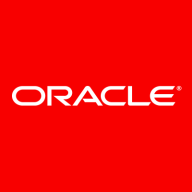

Find out in this report how the two Data Integration solutions compare in terms of features, pricing, service and support, easy of deployment, and ROI.
Our stakeholders and clients have expressed satisfaction with Azure Data Factory's efficiency and cost-effectiveness.
The technical support from Microsoft is rated an eight out of ten.
The technical support is responsive and helpful
The technical support for Azure Data Factory is generally acceptable.
The customer support for Oracle Integration Cloud Service is accessible through Service Requests (SR) for unknown problems, with a response expected within 24 hours.
I find the technical support from Oracle to be good.
Azure Data Factory is highly scalable.
The solution has a high level of stability, roughly a nine out of ten.
Oracle has provided some fixes, and in my last two to three large engagements, we haven't faced any major challenges with the product.
The reliability of Oracle Integration Cloud Service is strong.
The solution is stable.
Incorporating more dedicated API sources to specific services like HubSpot CRM or Salesforce would be beneficial.
Sometimes, the compute fails to process data if there is a heavy load suddenly, and it doesn't scale up automatically.
There is a problem with the integration with third-party solutions, particularly with SAP.
Setup and deployment can be done in OCI, the Oracle Cloud Infrastructure, allowing for role-based access and configuration, managing access levels for Oracle Integration Cloud Service environments such as Dev, Test, and Production.
The mapping is a bit complex, so configuration is not very easy for a new user.
Most large customers use multiple clouds, and Oracle's partnership with Azure and other hyperscalers needs additional development on the Integration Cloud Service side.
The pricing is cost-effective.
It is considered cost-effective.
If integration points exceed 30, I recommend that customers use Oracle Integration Cloud Service as it becomes cost-effective with its pay-as-you-use model and multiple available packages.
Oracle Integration Cloud Service's pricing is affordable and reasonable considering its facilities.
It connects to different sources out-of-the-box, making integration much easier.
The platform excels in handling major datasets, particularly when working with Power BI for reporting purposes.
Regarding the integration feature in Azure Data Factory, the integration part is excellent; we have major source connectors, so we can integrate the data from different data sources and also perform basic transformation while transforming, which is a great feature in Azure Data Factory.
Additionally, it provides a wide variety of built-in adapters for many cloud providers, such as Azure Blob and AWS S3.
Oracle Integration Cloud Service offers capabilities for data customization and validation, handling different date formats, and API calls using REST and SOAP.
It is very easy to integrate, and the pre-built APIs available to connect multiple systems help establish connections faster and more accurately.
| Product | Market Share (%) |
|---|---|
| Azure Data Factory | 4.5% |
| Informatica PowerCenter | 5.3% |
| SSIS | 5.1% |
| Other | 85.1% |
| Product | Market Share (%) |
|---|---|
| Oracle Integration Cloud Service | 6.2% |
| Boomi iPaaS | 11.7% |
| Microsoft Azure Logic Apps | 11.5% |
| Other | 70.6% |


| Company Size | Count |
|---|---|
| Small Business | 31 |
| Midsize Enterprise | 19 |
| Large Enterprise | 55 |
| Company Size | Count |
|---|---|
| Small Business | 8 |
| Midsize Enterprise | 8 |
| Large Enterprise | 27 |
Azure Data Factory efficiently manages and integrates data from various sources, enabling seamless movement and transformation across platforms. Its valuable features include seamless integration with Azure services, handling large data volumes, flexible transformation, user-friendly interface, extensive connectors, and scalability. Users have experienced improved team performance, workflow simplification, enhanced collaboration, streamlined processes, and boosted productivity.
Oracle Integration Cloud Service is a cloud-based integration tool that seamlessly integrates on-premise applications with Oracle Cloud (SaaS) or other cloud apps (for example, Workday, Salesforce, etc.) to other cloud apps. Oracle’s solution combines all the capabilities of application integration, process automation, visual application building, and integration analytics into a single unified cloud service. The solution offers real-time and batch-based integration, structured and unstructured processes, case management, stream analytics, and integration insight. All of these capabilities together allow users to service all their end-to-end integration needs in one cohesive platform.
Oracle Integration Cloud Service Features
Oracle Integration Cloud Service has many valuable key features. Some of the most useful ones include:
Oracle Integration Cloud Service Benefits
There are many benefits to implementing Oracle Integration Cloud Service. Some of the biggest advantages the solution offers include:
Reviews from Real Users
Oracle Integration Cloud Service is a solution that stands out when compared to many of its competitors. Some of its major advantages are that it has good adapters, is user friendly, and produces a solid ROI.
Rishabh S., Business and Technology Delivery Associate Manager at Accenture, says, “It has good performance, easy integration, is user-friendly, and also has helpful technical support. The dashboard provided by Oracle Integration Cloud for monitoring and error handling is very intuitive. You do not need a third-party dashboard or logging framework when you initiate the integration. There are a lot of adapters, which is what I like the most.”
“The most valuable features of this solution are the SFTP adapters, file adapters, and risk adapters, that we use in everyday projects,” says PeerSpot user Arun N., Technical Manager at a financial services firm.
Kanhaiya C., Solution Architect at Tata Consultancy, explains, "Oracle Integration Cloud Service is a really good product and the ROI is very good with it. It lowers development time. A development cycle that may have taken a year without Oracle Integration Cloud Service can drop down to three or four months with it."
We monitor all Data Integration reviews to prevent fraudulent reviews and keep review quality high. We do not post reviews by company employees or direct competitors. We validate each review for authenticity via cross-reference with LinkedIn, and personal follow-up with the reviewer when necessary.